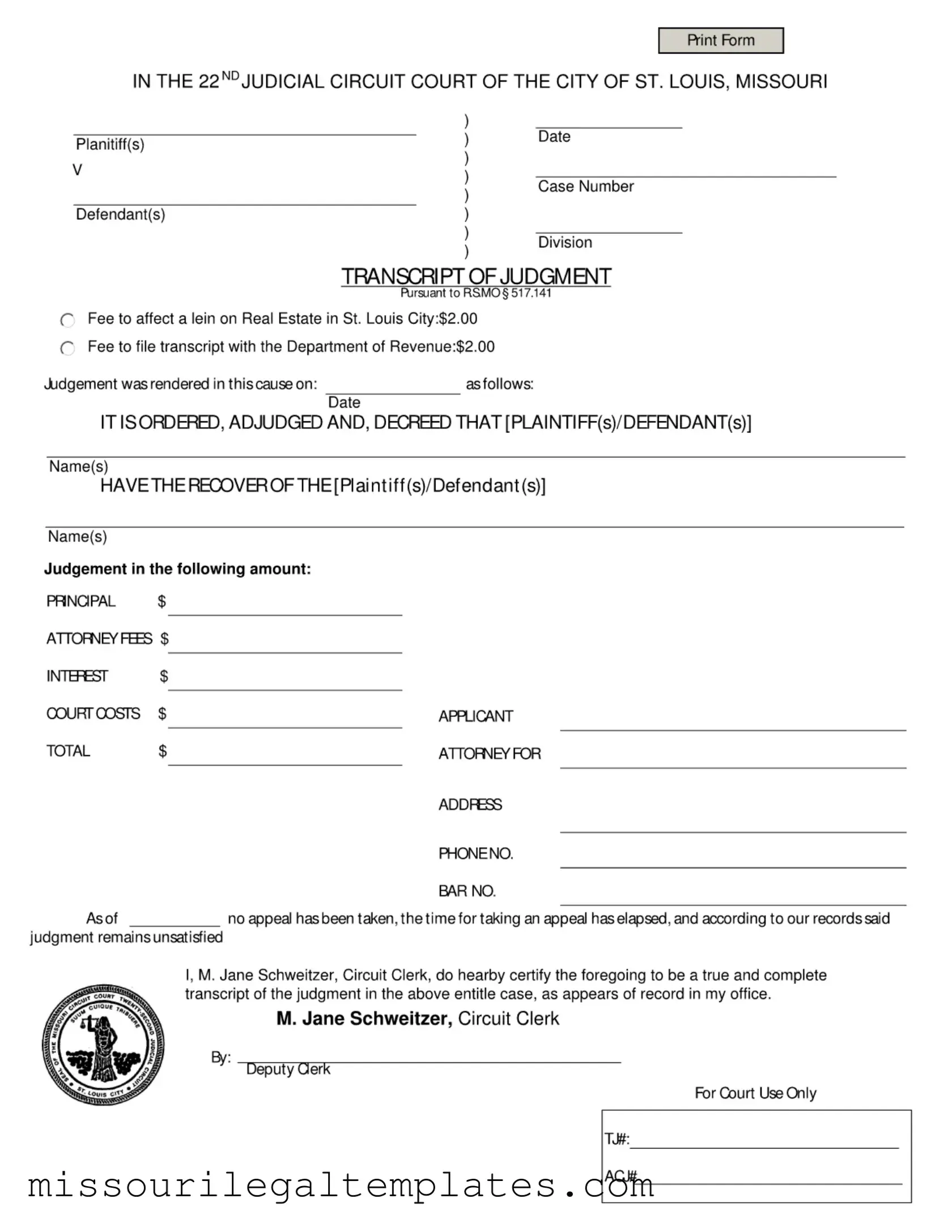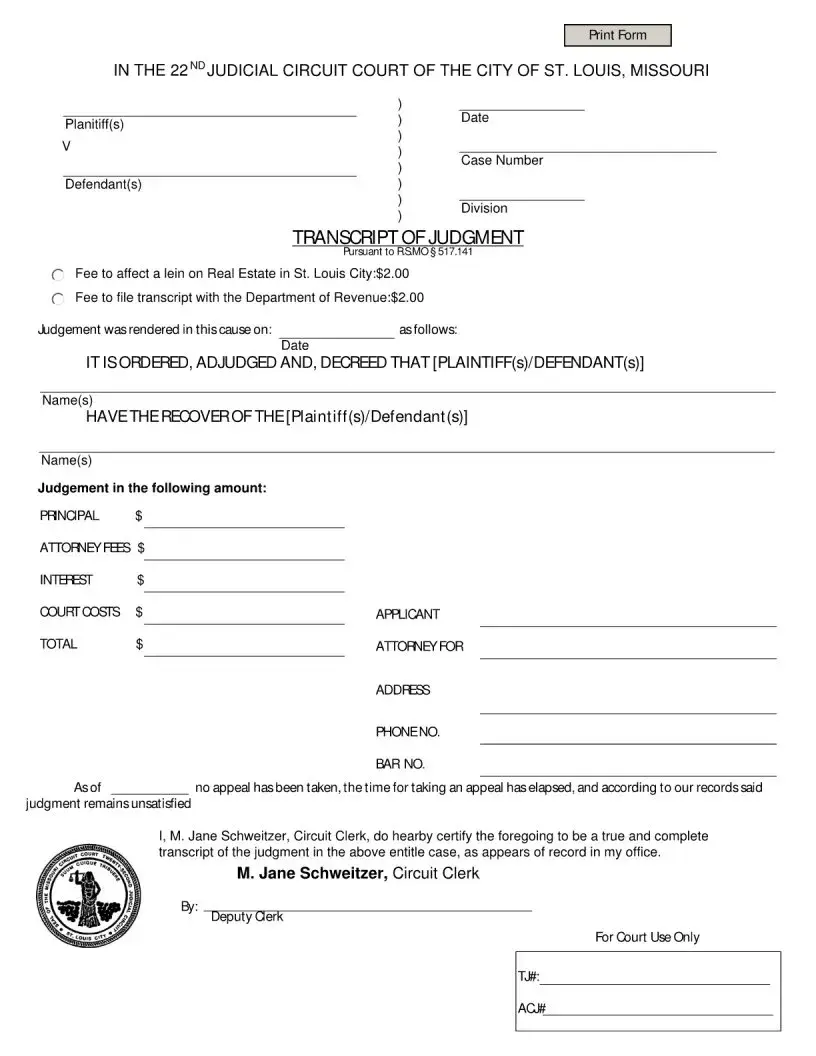The Missouri Transcript of Judgment form serves as an essential legal document within the 22nd Judicial Circuit Court of the City of St. Louis. It captures critical information regarding judgments rendered in civil cases, detailing the parties involved—both plaintiffs and defendants—as well as the case number and division. This form is not merely a record; it holds significant implications for enforcement and collection of judgments. It outlines the judgment amount, which includes principal, attorney fees, and court costs, culminating in a total sum owed. Additionally, the form indicates fees associated with filing the transcript with the Department of Revenue and the cost to affect a lien on real estate within St. Louis City. The certification by the Circuit Clerk, M. Jane Schweitzer, affirms the accuracy and completeness of the transcript, confirming that no appeal has been taken and that the judgment remains unsatisfied. Understanding this form is crucial for both legal practitioners and individuals navigating the court system, as it plays a pivotal role in the enforcement of court decisions.

